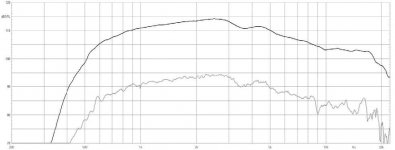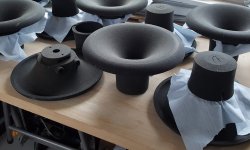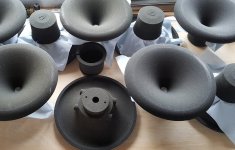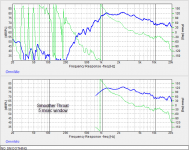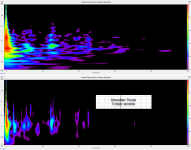An estimate of the DI can already be made based on this on-axis measurement.
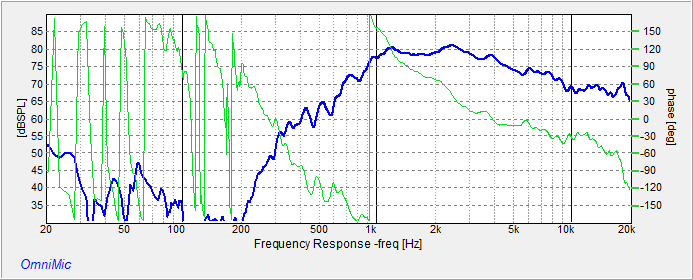
DI will be fairly constant in the midrange and coverage should remain relatively wide in the upper octave.
This is the measured on axis response of a "Novel Constant Directivity Horn".
Smoothed (upper) vs. unsmoothed (lower).
DI will be fairly constant in the midrange and coverage should remain relatively wide in the upper octave.
This is the measured on axis response of a "Novel Constant Directivity Horn".
Smoothed (upper) vs. unsmoothed (lower).
Attachments
How it works?An estimate of the DI can already be made based on this on-axis measurement.
It's great to see such progress. Now it really gets interesting.
Really looking forward to see more measurements. I'd use the throat as the center of rotation, at least this is used in the simulations (unless you change it). 10 deg step is fine.
Thanks Marcel, I will take more measurements after I make the throat smoother.
I made a typo on the distance it's not 10cm it is 100cm.
Windowing was set to blended, so there was a bit of room interaction on the posted response.
I will move the mic closer and limit the capture time.
What's a good setting, 5msec?
Should I move the mic closer? It's set at 1M right now...
"OMNIMIC "only to": for suppressing reflections. This is calculated only from the impulse response within the time selected. To select a different ending time, click the mouse at the desired time point within the impulse response graph. Impulse response information after the selected time will be excluded from the frequency response calculation. Select this time to totally exclude later reflections visible on the impulse response plot. Lower frequencies can't be measured using this option, limited by the length of the time selected. This mode works best when the OmniMic is relatively close to a loudspeaker."
"OMNIMIC "only to": for suppressing reflections. This is calculated only from the impulse response within the time selected. To select a different ending time, click the mouse at the desired time point within the impulse response graph. Impulse response information after the selected time will be excluded from the frequency response calculation. Select this time to totally exclude later reflections visible on the impulse response plot. Lower frequencies can't be measured using this option, limited by the length of the time selected. This mode works best when the OmniMic is relatively close to a loudspeaker."
- Home
- Loudspeakers
- Multi-Way
- Acoustic Horn Design – The Easy Way (Ath4)
